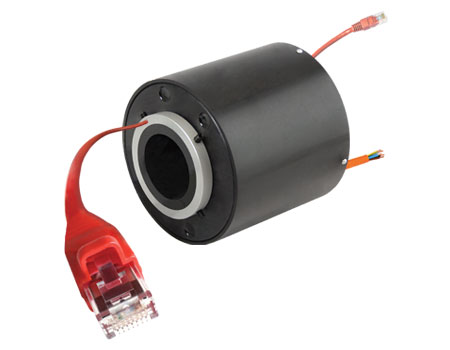
You need a slip ring when you need to transfer power or data continuously and reliably between a stationary and a rotating component. How do you know if your application needs a slip ring?
Keep reading to learn more about the different types of slip rings and how to determine if your application would benefit from using one.
Common Uses of Slip Rings in Industry
A slip ring is an essential part of many industrial machines. It allows electricity and other forms of communication to flow between two stationary points. Without it, many machines would not be able to function.
There are many different applications for slip rings. Some of the most common are electric motors, medical devices, robotics, and manufacturing equipment. In each case, the slip ring allows communication between two points that would otherwise be unable to do so.
For example, when used in electric motors, the slip ring allows the current to flow through the motor while the shaft is rotating, and it allows the motor to keep running while turning off and on. Medical devices can transfer power and data between a patient and the machine. And in robotics, it is often used to provide power and communication between the robot’s head and body.
Advantages and Disadvantages of Using Slip Rings
Now that you know what slip rings are and the different types, let’s look at their advantages and disadvantages.
Slip rings are beneficial because they provide continuous power or signal transmission in rotating machines, leading to stable performance. Additionally, they can transmit multiple signals simultaneously while requiring minimal maintenance.
On the other hand, slip rings also have some disadvantages. One of them is that after long periods of use, the contacts can become worn out and create issues with signal or power transmission. Also, slip rings contain many components that need to be very precisely calibrated for optimal performance.
Benefits of Using Slip Rings
When you’re looking to power and control your electrical equipment, you need a way to do so without creating a tangle of wires. That’s where slip rings come in.
Slip rings allow you to power and control your equipment without worrying about the wires. They make it easy to add or remove equipment and keep your work area neat and tidy. Plus, they’re a great way to extend the life of your equipment.
If you’re looking for an easy way to power and control your equipment, slip rings is the solution. A custom electrical slip ring with a pancake slip ring is often used to provide a stable connection between moving parts in an industrial or automotive setting.
Different Types of Slip Rings
When it comes to slip ring types, the options are nearly limitless. You can find them in electric and rotary designs, with many different configurations available depending on the application. For example, you can choose between the hollow bore and solid core shafts or rigid and flexible connectors.
Also, you can find slip rings with different contact materials such as gold or silver for maximum conductivity; graphite for extended life and higher current; ceramic for greater accuracy; and hybrid combinations tailored to handle specific operating conditions.
In addition, many sizes are available, from miniature versions the size of a dime to ones that weigh multiple pounds. Regardless of the application, there’s a slip ring that can meet your exact needs.
Conclusion
A slip ring is a great way to get the most out of your equipment. By understanding the different types of slip rings and how they can be used, you can ensure that you’re getting the most out of your machines and improving your productivity.
Interesting Related Article: “Renewable Energy With The Help Of Slip Rings“

